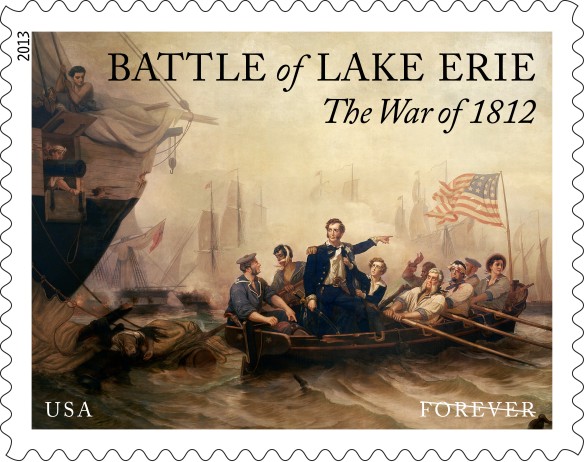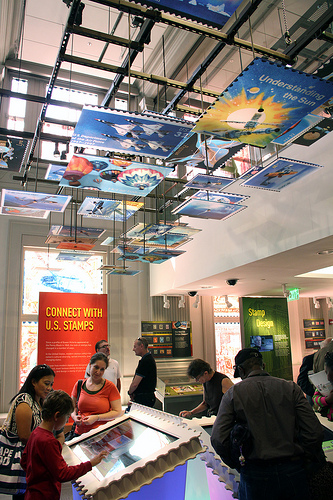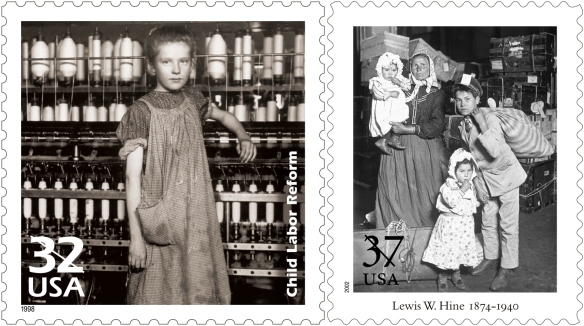The recently issued Battle of Lake Erie stamp commemorates one of the most important engagements of the War of 1812. This battle, fought 200 years ago on September 10, 1813, is considered a turning point of the war. For the stamp art, art director Greg Breeding chose to reproduce William Henry Powell’s famous painting, Battle of Lake Erie.
 The oil-on-canvas painting was commissioned by Congress in 1865 and completed in 1873. It depicts the heroic action of Master Commandant Oliver H. Perry and a portion of his crew as they rowed a small boat through a hail of gunfire from Perry’s ruined flagship, the Lawrence, to the Niagara. After taking command of the Niagara, Perry was able to save the day by pursuing four of the largest British ships and forcing them to surrender.
The oil-on-canvas painting was commissioned by Congress in 1865 and completed in 1873. It depicts the heroic action of Master Commandant Oliver H. Perry and a portion of his crew as they rowed a small boat through a hail of gunfire from Perry’s ruined flagship, the Lawrence, to the Niagara. After taking command of the Niagara, Perry was able to save the day by pursuing four of the largest British ships and forcing them to surrender.
Powell’s nearly 17- by 27-foot painting looms large in the east stairway of the Senate wing in the U.S. Capitol and is part of the U.S. Senate Collection.
It was not Powell’s first painting of the Battle of Lake Erie. In 1847, the Ohio artist had received a commission from Congress to paint Discovery of the Mississippi by De Soto for the U.S. Capitol Rotunda. This prestigious assignment led to another one, when his home state commissioned him to portray the Battle of Lake Erie. The completed work, Perry’s Victory on Lake Erie, was displayed in the rotunda of the Ohio Statehouse in Columbus in 1865. In March of that year Congress commissioned Powell to execute a similar painting for the U.S. Capitol.
This 9.5 x 8-inch envelope bears an affixed sheet of 20 Battle of Lake Erie Forever® stamps cancelled with official First Day of Issue black pictorial and standard postmarks. Click the image for details.
As did many artists portraying key historical events, Powell took certain liberties with the facts. He chose, for instance, to portray the Stars and Stripes flying from the bow of the small boat that ferried Perry to the Niagara. In actuality, Perry carried with him his private flag, emblazoned with the words “Don’t Give Up the Ship,” in honor of his good friend Captain James Lawrence, who had uttered them only a few months earlier as he lay mortally wounded in a naval battle with the British.
Powell also made the questionable additions of an African American and of Perry’s young brother, Alexander, to the crew of the small boat. Alexander is shown anxiously tugging at Perry’s coat, evidently urging him to sit down to avoid being struck by gunfire. (This information comes from the Web site of the Office of the Senate Curator.)
Despite these licenses, Powell’s painting is widely admired and has been reproduced in numerous books and articles about the War of 1812. Its beauty and power, even at stamp size, remains undiminished.
The Battle of Lake Erie stamp is available now at usps.com/stamps, by calling (), and at Post Offices around the country.




